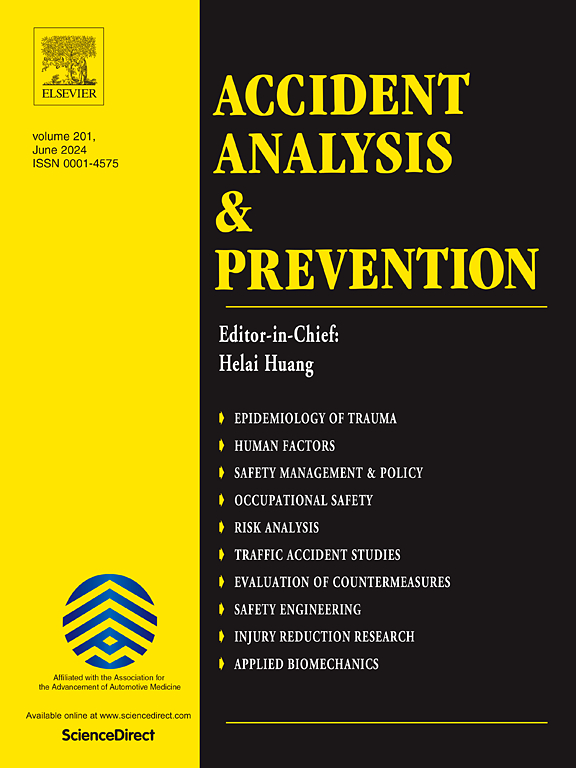Prioritizing safety funding using severity weighted risk scores
IF 5.7
1区 工程技术
Q1 ERGONOMICS
引用次数: 0
Abstract
Limited funding availability requires government agencies to focus transportation funding on locations most in need of safety improvements. The Two-Output Model for Safety (TOMS) was created to prioritize segments and intersections for safety analysis. The TOMS compiles input data, prepares the data files so that the format and content are consistent, and then two different processes occur. The first is to segment roadways based on five variables: average annual daily traffic, functional class, lanes, speed limit, and urban code. The second is to assign the physical characteristics of the roadway to each individual intersection. TOMS outputs a segment file and an intersection file used for statistical analysis and are the “two outputs” referenced by the name of the model. The segments and intersections are analyzed using severity and total number of crashes at the sites. An excess weighted risk score was developed using an equivalent property damage only value to analyze the severity and number of crashes concurrently. The segments and intersections with the highest excess weighted risk scores are prioritized as locations for safety funding. A report compiler is then executed to create two-page safety reports that contain roadway and crash information organized in a manner that allows governing agencies to identify how many crashes are occurring at a site and the manner of collision for the crashes. The research presented in this paper shows that the simultaneous use of intersection and segment analysis combined with excess weighted risk scores can provide insight into the prioritization of safety funding.
使用严重性加权风险评分对安全资金进行优先排序
有限的可用资金要求政府机构将运输资金集中在最需要改善安全的地方。建立了双输出安全模型(TOMS),以优先考虑路段和交叉口的安全分析。TOMS编译输入数据,准备数据文件,使格式和内容保持一致,然后发生两个不同的过程。第一种方法是根据五个变量对道路进行划分:年平均日交通流量、功能类别、车道、限速和城市法规。第二种方法是将道路的物理特征分配给每个单独的交叉口。TOMS输出用于统计分析的段文件和交集文件,是模型名称引用的“两个输出”。使用严重程度和事故总数对路段和路口进行分析。使用等效的仅财产损失值开发了超额加权风险评分,以同时分析事故的严重性和数量。具有最高超额加权风险分数的路段和交叉路口优先作为安全资金的位置。然后执行一个报告编译器来创建两页的安全报告,其中包含道路和碰撞信息,这些信息的组织方式允许管理机构确定在一个地点发生了多少次碰撞以及碰撞的方式。本文的研究表明,同时使用交叉口和分段分析,结合超额加权风险评分,可以深入了解安全资金的优先级。
本文章由计算机程序翻译,如有差异,请以英文原文为准。
求助全文
约1分钟内获得全文
求助全文
来源期刊

Accident; analysis and prevention
Multiple-
CiteScore
11.90
自引率
16.90%
发文量
264
审稿时长
48 days
期刊介绍:
Accident Analysis & Prevention provides wide coverage of the general areas relating to accidental injury and damage, including the pre-injury and immediate post-injury phases. Published papers deal with medical, legal, economic, educational, behavioral, theoretical or empirical aspects of transportation accidents, as well as with accidents at other sites. Selected topics within the scope of the Journal may include: studies of human, environmental and vehicular factors influencing the occurrence, type and severity of accidents and injury; the design, implementation and evaluation of countermeasures; biomechanics of impact and human tolerance limits to injury; modelling and statistical analysis of accident data; policy, planning and decision-making in safety.
 求助内容:
求助内容: 应助结果提醒方式:
应助结果提醒方式:


